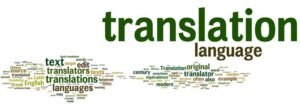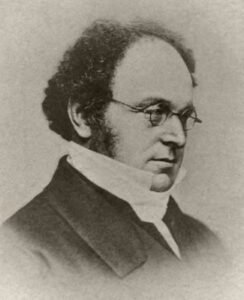5.4 Practice with Conjunctions and Disjunctions
This module contains activity pages which provide practice with symbolizing, creating truth tables for, and applying rules of inference for conjunctions and disjunctions. It also introduces DeMorgan’s law, and proves its validity.
Table of Contents
5.4.1 Practice Translating Conjunctions and Disjunctions

Learning symbolic logic is like learning to translate into a new language.
5.4.2 Practice Using Truth Tables with Conjunctions and Disjunctions

Truth tables help you know which combination of truth values for atomic sentences you need.
5.4.3 Practice with DeMorgan’s Law (DEM)

Augustus De Morgan (1804-1871), the British logician who formulated De Morgan’s laws
DeMorgan’s Rule (DEM)
On the previous page, we proved that two pairs of sentences were logically equivalent:
~(P v Q) ≡ ~P & ~Q
“Neither P nor Q if and only if not P and not Q”
~(P & Q) ≡ ~P v ~Q
“Not Both P and Q if and only if either not P or not Q”
This equivalence, known as “DeMorgan’s Law”, gives us a new, and very useful, rule of inference. There are four applications of it:
- ~(P v Q)
- ~P & ~Q (1, DEM)
- ~(P & Q)
- ~P v ~Q (1, DEM)
- ~P & ~Q
- ~(P v Q)(1, DEM)
- ~P v ~Q
- ~(P & Q)(1, DEM)
Notice that DeMorgan’s law is different from a common mistake that many beginning logic students make, which is treating the logical negation sign as though it were the mathematical ‘minus’ sign. That’s incorrect. Distributing a ~ sign over ( ) requires changes to the main connective inside the parentheses: v changes to &, and & changes to v.
- ~(P v Q)
- ~P v ~Q !!INVALID!!
- ~(P & Q)
- ~P & ~Q !!INVALID!!
5.4.4 Practice with Enthymemes for Conjunction and Disjunction

The only way to master a new skill is practice.
Enthymemes
An enthymeme is an incomplete argument, missing a premise. The purpose of an enthymeme is to get you thinking “backwards”, figuring out what was needed in the argument in order to reach the conclusion.
Submodule 5.4 Quiz
Licenses and Attributions
Key Sources:
- Watson, Jeffrey (2019). Introduction to Logic. icensed under: (CC BY-SA).
Next Page: 6.1 Existentials and Universals with Venn Diagrams
